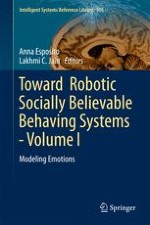2016 | OriginalPaper | Buchkapitel
6. Going Further in Affective Computing: How Emotion Recognition Can Improve Adaptive User Interaction
verfasst von : Sascha Meudt, Miriam Schmidt-Wack, Frank Honold, Felix Schüssel, Michael Weber, Friedhelm Schwenker, Günther Palm
Erschienen in: Toward Robotic Socially Believable Behaving Systems - Volume I
Aktivieren Sie unsere intelligente Suche, um passende Fachinhalte oder Patente zu finden.
Wählen Sie Textabschnitte aus um mit Künstlicher Intelligenz passenden Patente zu finden. powered by
Markieren Sie Textabschnitte, um KI-gestützt weitere passende Inhalte zu finden. powered by
